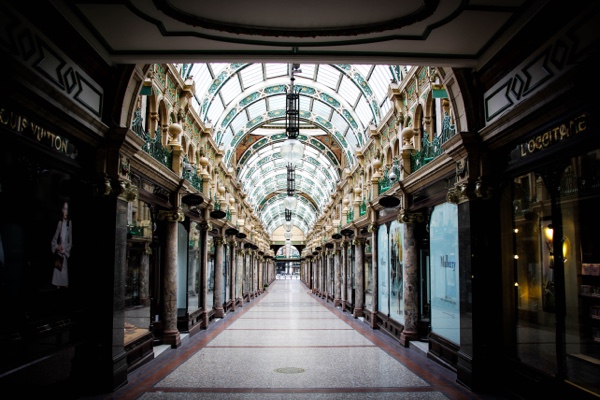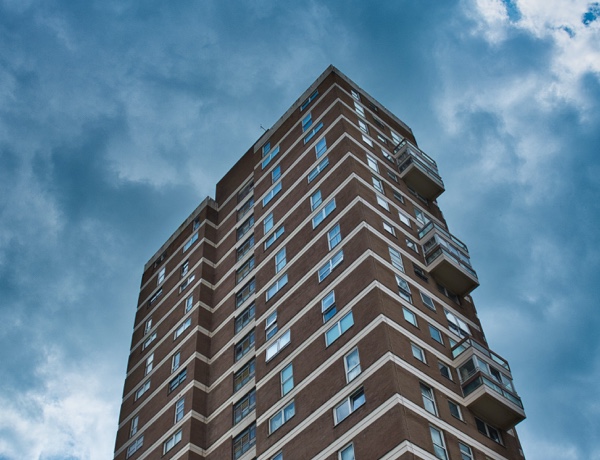
As part of our podcast series, we spoke to urban anthropologist, Gemma John, about the work her company, Human City, does with asset management companies and local authorities to achieve social value, her perspective on interdisciplinarity in the context of the built environment, and what ‘speaking for the social’ means in practice. Gemma is talking in the Smart Cities stream at the 2020 conference.
Your PhD research into the Freedom of Information (Scotland) Act 2002 led to an interest in knowledge and transparency and that’s informed your work and research since. How has that shaped your career trajectory?
Thanks for that question, it’s a really interesting one and I think it’s foundational because I talk to people wanting to move out of the academy into applied research and say that they need to find a story about what motivated them to move from one space to another. I guess this is my story.
My PhD was in access to information, also freedom to information, and that was all about providing citizens with the opportunity to access information held by local authorities in the name of transparency, participation, and local government. It was really about opening up local government to members of the public who wanted to access information and participate in decision-making.
I moved from academic research, in that broad context of knowledge economy, into applied research and workplace change, but later on into other areas of work, focusing on spatial transformation in the context of the knowledge economy.
The question from my research was around was knowledge. So once people get hold of the information, how does that translate into knowledge and produce this kind of transparency that people anticipated was going to result from this legislation. The question, what is knowledge in the context of the knowledge economy, is a broader one well beyond that piece of legislation.
Broadly speaking it lent itself to questions around interdisciplinarity, collaboration, and how do people make new meanings through new combinations and through new interactions with each other. Marilyn Strathern’s Commons and Borderlands book is fantastic at addressing some of those issues, how do you make knowledge mobile, how it is made portable, etc.
And of course all these questions were having a profound impact on practice and how we think about our built environment. So a really clear example is the workplace, and how we work with each other, and how we interact with each other at work, not only just in the academy but beyond the academy and in offices, etc., and how ideas of knowledge transfer, knowledge and collaboration and interdisciplinarity or into industry collaborations was a big thing.
So I moved from academic research, in that broad context of knowledge economy, into applied research and more specifically workplace change, but later on into other areas of work, focusing on spatial transformation in the context of the knowledge economy.
Your consultancy Human City helps people to take a successful and socially-responsible approach to property investing and development. Can you tell us more about that and who you typically work with?
At Human City we direct our services towards asset managers, which are the companies responsible for using and managing property as an asset to generate a certain level of income for investors and themselves. So we direct our services to asset management companies, but we also direct our services to local authorities who seek to work with asset management companies and development teams to maximize the value for local communities and residents.

So one way of thinking about the way in which an asset management company can operate or manage their asset is in the interest of local communities. In doing so they bring both returns to their business and to their investor clients, but also to society itself. And so that’s where we work.
Human City is at the intersection between public and private sector interests through a variety of methods, mostly focusing on something called social value, which was a piece of legislation introduced to 2013 that meant in the context of planning that companies had to demonstrate social value and return to society but also other new concepts such as shared value, which is about, how do you think in such a way where business and society’s interests are aligned. There are many movements around those kinds of ambitions and businesses moving in that direction.
Human City is at the intersection between public and private sector interests, mostly focusing on something called social value, which was a piece of legislation introduced to 2013 that meant in the context of planning that companies had to demonstrate social value and return to society.
More recently there’s been a shift in the investor community, much more so than historically, towards impact investing and so how do investors invest in a more impactful way around environmental, social, and governance, and other criterion factors, and the context of planning shared value. And that’s where societal impact is really becoming increasingly important.
As an anthropologist, you’re fascinated by the changing ways in which people live and work in cities. Designing new city spaces that put people first can deliver outstanding financial and social value. Thinking about some of the urban projects you’ve worked on over the years, can you share some success stories where putting people first has achieved financial and social value?
I’ve mentioned what the general approach is but take retail as an example where technology, but other factors, are having a disruptive impact on the retail sector. In the light of COVID-19 many retail assets have halved in value so whether they’re owned by local councils or whether they’re privately owned, they actually are worth half the amount. So imagine your house dropped in value by half, it’s equivalent to what’s happening in the retail sector. So in that context, it’s a prime example of how social value can help companies reimagine what retail space might be in the context of, what is it to that business and also what does it deliver to local society?
We worked in a small town where there was particular local need. Young people living in the town left the town as soon as they could, at the age of 17 or 18…So retail being a really great example where social and financial value are paired together in the context of crisis.
So, in order to understand how retail can be perhaps structured or reconfigured differently to answer social questions and respond to that social context, we need to know what’s going on in that local area, understand the local context and dynamic, and how that asset sits within the local community, and what value it might bring to that local group. This involves working with local institutions and groups to help asset owners deliver a service in the context of that retail space that is of value to that local group.
To give you a concrete example, we worked in a small town called Chesterfield where there was particular local need. Young people living in the town left the town as soon as they could, at the age of 17 or 18, and so there was a need to offer something to them, particularly to support professional and personal development in the town. So the retail space was a perfect place where young people could be connected to SMEs, and for SMEs to connect to local talent, and that retail space was turned into a space for networking and connecting and entrepreneurship. So retail being a really great example where social and financial value are paired together in the context of crisis.

The conference emphasizes the importance of interdisciplinarity. From your own experience of working at AECOM and Foster + Partners, and now with your own consultancy, what are your thoughts on working with people from different disciplines to achieve positive impact on projects?
Increasingly the design profession itself, the built environment, is seeing itself as more interdisciplinary…there’s an appreciation that design requires multiple viewpoints, multiple perspectives, in order to problem-solve.
Another great question. Now is our time, I guess. Increasingly the design profession itself, the built environment, is seeing itself as more interdisciplinary. So there’s an opportunity for people from various disciplines and backgrounds to work in the context of design.
When I was at Foster + Partners, there was an interest in creating a research team that consisted of anthropologists, sociologists, neuroscientists, philosophers, etc., because there’s an appreciation that design requires multiple viewpoints, multiple perspectives, in order to problem-solve but also a greater awareness of the impact of technology, and technology changing the design profession moving forward. So actually if the design profession is going to reinvent itself, it has to be much more adaptable and an interdisciplinary as a profession.
Think about people, think about what’s going on, cultural and societal change, and then pull that understanding back into the building, rather than thinking about building and people as a kind of cause and effect relationship.
So there’s that kind of opening emerging in the context of design but as an anthropologist is not always easy, you know, interdisciplinarity is hard work. We all know that. You’re working with people in the context of the built environment who are building-centered, so they’re thinking about impacting in a building-centred way. So they might think about the impact of building an environment has on people and rather than thinking about people as themselves having culture and undergoing and experiencing social transformation, they are very much thinking about the impact of the environment on people itself.
So as a social scientist, what we try to do is to separate those two concerns. Think about people, think about what’s going on, cultural and societal change, and then pull that understanding back into the building, rather than thinking about building and people as a kind of cause and effect relationship. Otherwise, you’re thinking about the building environment in terms of temperature and air quality rather than fundamentally thinking about what it means to be human and therefore what spaces we should be designing.
The pandemic has affected where we work and most of us are now working from home, sometimes in difficult and cramped conditions, but the rising cost of housing together with the lack of affordable housing means we need new solutions fairly quickly. What are your thoughts around this?
I’m being much more active in saying look, we can use our resources and assets to deliver affordable solutions, and there are some great examples of that going on.
We definitely need new solutions. And this has been going on for some time. We all know there’s a fundamental crisis in housing, a lack of housing and fundamentally new houses just need to be built, there’s not enough housing for people. But the main problem is you’re going around in circles around this issue of land value and the cost of development.
The reason why housing is so-called unaffordable at the moment is because the cost of land and the cost of development itself mean property prices remain high. So the private and private sector bat this issue back and forth. The public sector say it’s up to the private sector to take the hit and reduce the profit they might otherwise foresee getting, and yet there’s also an expectation the public sector has to subsidize, to kind of make up that difference, and so it goes back and forth.
But local authorities themselves are becoming developers, they’re voting with their feet, and I’m really being much more active in saying look, we can use our resources and assets to deliver affordable solutions, and there are some great examples of that going on. Take, for example, Meridian Water in Enfield. A huge number of houses are being built there. Something like 25% more housing needs to be built in London by 2029 or something, something incredibly ambitious. But Meridian Water is a great example of where housing is being built.
There needs to be thinking around that systemic equation between housing, employment, and health, and actually in providing housing you’re making cost savings in other areas.
But of course in subsidizing housing, providing so-called affordable solutions, the public sector is also cash-strapped. How can they balance their own books in the context of the kind of services that they provide, and so there’s lots of discussions around what the value is to them as a council, the money they get back from that kind of offer, and there needs to be thinking around that systemic equation between housing, employment, and health, and actually in providing housing you’re making cost savings in other areas.
So more affordable housing means happy and healthy people, etc., and that equation needs to be made more explicit in order to justify the money spent on affordable housing. In the private sector there are moves towards alternative residential like co-living, co-housing, and so forth. There’s lots of discussion and moves on both sides, and lots more work that needs to be done to resolve that problem.
Even if the local Authority becomes a developer, they themselves are acting as a business so they must be able to see some return from that or at least be able to balance their books. Essentially this is what something called ‘social return on investment’ does, it creates an equation around what are the other benefits from good housing such as employment opportunities, and the fact that you’re likely to have healthier, happier, and more prosperous people. Actually overall, it’s a good investment.
You’ve said that the time is ripe for anthropologists to ‘speak for the social’. For our non-anthropologist readers, can you explain what “speaking for the social” means in practice and why it is important?
As anthropologists…we challenge the idea that society is this new category, that you can consult, that it’s a fixed entity.
It goes back to the increased need to incorporate the views of society and decision-making. We’ve seen that in the built environment in relation to public consultation and how in development there’s a need to get feedback from members of public, particularly in a local area around the impact of that development on that specific group of people, incorporate their views into further iterations of that development. It’s quite often required in the context of planning and planning permission to know that the developer has attempted to consult members of the general public.

Anthropologists obviously support that kind of engagement, absolutely, but we challenge the idea that society is this new category, that you can consult, that it’s a fixed entity. And so speaking for the social is both speaking and being in a position to represent so-called society, but actually challenging the idea that it’s a neat, fixed entity and that it’s much more plural, and unpacking and exploring that plurality and the multitude of ways in which the society gets formed and reformed almost as a kind of relationship.
To speak of the social is really about what kind of societies, what kind of socials come into view in the context of practice, particularly when you’re collaborating with other experts on products.
Bringing people together across different disciplines — architects, people in housing policy as well as academics — to really interrogate this idea of what do we mean by social.
I’m working on an edited volume with Hannah Knox (Associate Professor at UCL), which comprises contributions from people in practice across different disciplines, at architects, for example, as well as people in housing policy and academics, and bringing them together to really interrogate this idea of what do we mean by social, what kind of socials come into view, what kind of ideas come to the fore methodologically when we’re engaged in projects around technical change.
Anthropologists’ contribution to smart cities? An appreciation of how human and non-human forms and infrastructure coexist in a mutually constituting way.
How can anthropologists contribute to smart cities and the built environment even those who don’t specialize in smart cities?
Again, it’s just an appreciation of how human and non-human forms and infrastructure coexist in a mutually constituting way. In the context of smart cities that’s about data, how we use data and how data shapes us, that in using data, data gives us particular social cultural forms, in a sense we’re using data but data is also shaping us and our use of it.
You can listen to the full interview with Gemma on our podcast here.
Photo credits: Victor Garcia, Gary Butterfield, Gunnar Ridderström, and Angela Compagnone on Unsplash.
